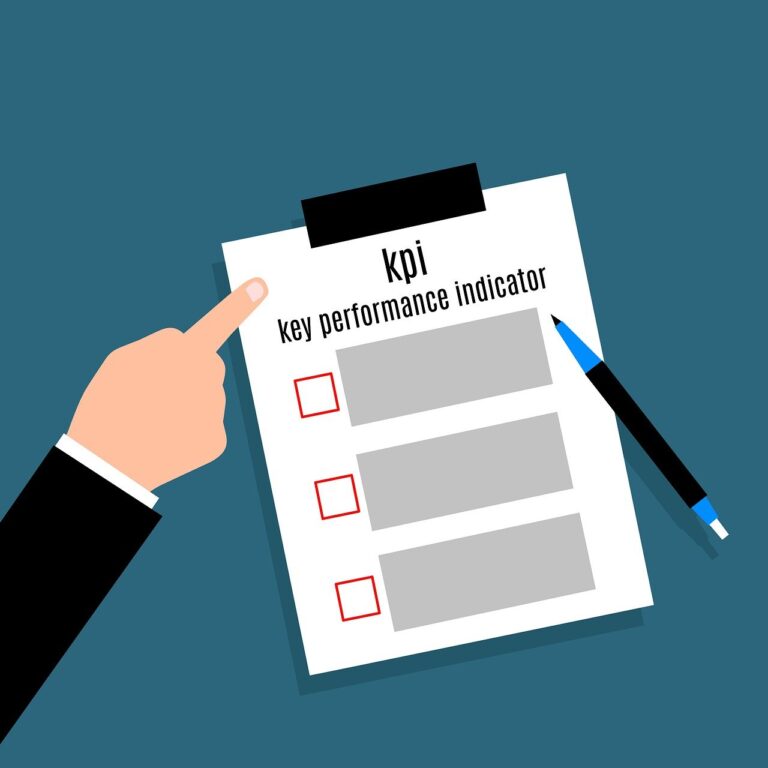In today’s digital landscape, businesses rely heavily on understanding the customer journey to optimize their marketing efforts, enhance user experience, and ultimately drive conversions. The customer journey online is a complex, multifaceted process that covers every interaction a user has with a brand, from initial awareness to post-purchase engagement. Monitoring this journey requires a set of measurable indicators known as Key Performance Indicators (KPIs). These KPIs provide insights into customer behavior, preferences, and pain points, helping businesses make data-driven decisions.
In this article, we will take a deep dive into the most significant KPIs associated with the online customer journey. We will explore their role at each stage of the journey, their importance, and how businesses can use them to improve overall customer satisfaction and business outcomes.
1. KPIs for the Awareness Stage
The awareness stage is the first point of contact between a customer and a brand. At this stage, potential customers become aware of a brand’s existence, typically through channels like social media, search engines, paid ads, or word-of-mouth. Key performance indicators at this stage measure how effectively a brand captures attention and increases its visibility.
a. Impressions
- Definition: Impressions measure how many times a brand’s content (ads, social media posts, search results) is displayed to potential customers, regardless of whether they engage with it.
- Importance: High impressions indicate a brand’s visibility, but they don’t necessarily correlate with engagement or conversions. Monitoring impressions helps businesses understand their reach.
- Use Case: A brand running a digital ad campaign may measure impressions to evaluate how often their ads are shown to users across various platforms.
b. Reach
- Definition: Reach refers to the total number of unique users who have seen a brand’s content. Unlike impressions, which can include multiple views by the same user, reach only counts unique visitors.
- Importance: High reach means that a brand is being exposed to a wider audience. It is a critical KPI for gauging brand awareness.
- Use Case: A company launching a new product might track reach to determine how many unique users saw their product-related posts on social media.
c. Website Traffic
- Definition: Website traffic measures the number of visitors to a company’s website. This includes metrics like unique visitors, sessions, and page views.
- Importance: Website traffic indicates how successful a business is in driving potential customers to its digital storefront. Tracking traffic from various channels (e.g., organic search, social media, paid ads) gives insights into where the audience is coming from.
- Use Case: An e-commerce website launching a sale might track website traffic to see how many users are visiting the site as a result of promotional efforts.
d. Click-Through Rate (CTR)
- Definition: CTR is the percentage of users who click on a link or advertisement compared to the total number of users who viewed it.
- Importance: CTR provides insight into how compelling your messaging is to your target audience. A low CTR might indicate that an ad or content is not resonating, while a high CTR suggests strong relevance and interest.
- Use Case: An email marketing campaign could measure CTR to see how many recipients clicked on a call-to-action link to visit the website.
2. KPIs for the Consideration Stage
In the consideration stage, potential customers are evaluating a brand’s offerings and comparing them with competitors. The KPIs at this stage are focused on how well a business engages its audience and provides valuable information to nurture leads.
a. Bounce Rate
- Definition: Bounce rate refers to the percentage of visitors who land on a website and leave without interacting with any other pages.
- Importance: A high bounce rate indicates that visitors are not finding the content relevant or engaging. Reducing bounce rates can lead to higher engagement and eventually better conversions.
- Use Case: A service-based business may monitor the bounce rate of its landing pages to determine whether they are providing the information potential clients are seeking.
b. Time on Site / Session Duration
- Definition: This KPI measures the average amount of time users spend on a website during a single session.
- Importance: The more time users spend on a site, the more engaged they are with the content. Longer session durations often indicate that the site is providing useful and engaging content.
- Use Case: An online blog might track session duration to see if visitors are reading articles in full or leaving early, providing insights into content quality.
c. Pages per Session
- Definition: This measures the average number of pages a visitor views during a single session.
- Importance: More pages per session suggest that visitors are interested in exploring the website, possibly evaluating multiple products or services before making a decision.
- Use Case: An e-commerce site may use this KPI to understand how many product pages users browse before making a purchase.
d. Engagement Rate (Social Media)
- Definition: Engagement rate measures how users interact with a brand’s social media content, including likes, shares, comments, and clicks.
- Importance: High engagement rates suggest that content is resonating with the audience, building a sense of trust and connection with the brand.
- Use Case: A business running a series of social media posts could measure engagement rate to determine which types of posts (e.g., videos, images, text) generate the most interaction.
3. KPIs for the Conversion Stage
The conversion stage is when a potential customer takes the desired action, such as making a purchase, signing up for a newsletter, or downloading a resource. KPIs at this stage are critical for measuring success in turning visitors into leads or paying customers.
a. Conversion Rate
- Definition: Conversion rate is the percentage of website visitors who complete a desired action, such as purchasing a product, signing up for an email list, or downloading a whitepaper.
- Importance: This is one of the most important KPIs for any online business, as it directly correlates to revenue generation. Improving the conversion rate is often a top priority for businesses.
- Use Case: An online retailer may track conversion rates to understand how effectively their product pages are turning visitors into buyers.
b. Cost per Conversion (CPC)
- Definition: CPC measures how much it costs a business to generate a conversion through paid advertising.
- Importance: This KPI helps businesses evaluate the return on investment (ROI) of their advertising efforts. Lowering the cost per conversion can significantly increase profitability.
- Use Case: A company running Google Ads might track CPC to determine how cost-effective their ad campaigns are in generating new customers.
c. Abandoned Cart Rate
- Definition: The abandoned cart rate measures the percentage of users who add products to their cart but leave the site without completing the purchase.
- Importance: A high abandoned cart rate indicates a disconnect in the user experience, such as complicated checkout processes or unexpected shipping costs. Reducing this metric can have a substantial impact on overall sales.
- Use Case: An online store might analyze the abandoned cart rate to see if adjustments to the checkout process (e.g., simplifying form fields, providing guest checkout options) can reduce drop-offs.
d. Lead-to-Customer Ratio
- Definition: This KPI tracks how many leads (potential customers) convert into paying customers.
- Importance: The lead-to-customer ratio is crucial for understanding the effectiveness of sales funnels and marketing campaigns. It indicates how well a business nurtures leads through the consideration stage into the conversion stage.
- Use Case: A SaaS company might track this metric to evaluate how many trial users end up purchasing a subscription.
4. KPIs for the Retention and Loyalty Stage
Once a customer has made a purchase, businesses aim to build long-term relationships that result in repeat purchases and brand loyalty. KPIs in this stage help measure customer satisfaction and the effectiveness of retention strategies.
a. Customer Retention Rate
- Definition: Retention rate measures the percentage of customers who continue to purchase from a business over a specific period.
- Importance: Retaining existing customers is often more cost-effective than acquiring new ones. A high retention rate signifies strong customer satisfaction and loyalty.
- Use Case: A subscription-based service could track retention rates to see how many users renew their subscriptions over time.
b. Customer Lifetime Value (CLV)
- Definition: CLV is the total revenue a business can expect from a single customer over the entire duration of their relationship.
- Importance: Maximizing CLV is critical for long-term profitability. Understanding CLV helps businesses tailor their marketing and retention efforts to high-value customers.
- Use Case: An e-commerce business may calculate CLV to identify high-spending customers and develop targeted marketing campaigns aimed at keeping them engaged.
c. Net Promoter Score (NPS)
- Definition: NPS is a metric that measures customer satisfaction and loyalty by asking how likely customers are to recommend a product or service to others on a scale from 0 to 10.
- Importance: NPS is a valuable predictor of customer loyalty. A high NPS indicates that customers are not only satisfied but also willing to promote the brand to others, driving organic growth.
- Use Case: A software company could use NPS surveys after major product updates to gauge customer satisfaction and improve future releases.
d. Repeat Purchase Rate
- Definition: The repeat purchase rate tracks the percentage of customers who make more than one purchase from a brand.
- Importance: A high repeat purchase rate is an indicator of customer loyalty and satisfaction. It suggests that the brand is providing enough value to keep customers coming back.
- Use Case: An online retailer might use this KPI to measure the effectiveness of loyalty programs or promotional campaigns designed to encourage repeat business.
Conclusion
Tracking KPIs associated with the customer journey online is critical for businesses to understand how customers interact with their brand, identify areas for improvement, and optimize the user experience. By carefully monitoring KPIs at each stage—from awareness to retention—companies can make data-driven decisions that improve their marketing strategies, increase customer satisfaction, and drive growth. Whether you’re measuring website traffic, engagement rates, conversion metrics, or retention indicators, a robust approach to KPI analysis ensures that businesses stay aligned with their customers’ needs and expectations. As customer journeys continue to evolve in the digital world, adapting and refining these KPIs will remain essential for achieving long-term success.
You may also like the below


